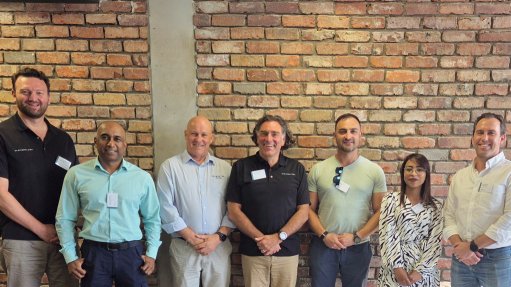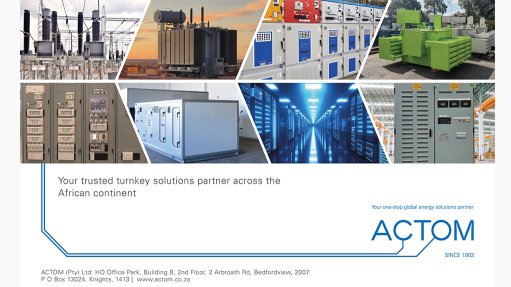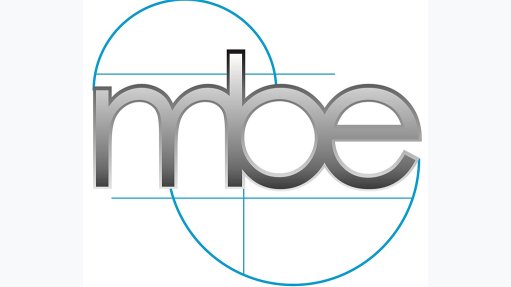Opportunities, challenges for South Africa in green hydrogen mobility
There are a number of opportunities for South Africa in terms of the use of green hydrogen in mobility applications; however, this requires proper consideration and mitigation of several challenges, Sasol Energy principal engineer Paul Schaberg said on day two of the Hydrogen Africa Conference and Expo 2022, held in Sandton, on September 29.
Schaberg said hydrogen mobility must not be considered only through a passenger car lens.
He expanded that, given the pace of battery technology development for passenger cars, battery electric vehicles (BEVs) were a viable alternative to internal combustion engine cars. Moreover, these are also being used in trucks and buses.
Moreover, while BEVs are still quite expensive, the same goes for hydrogen, he pointed out.
Therefore, he said it was important to identify the applications in the mobility space where hydrogen could have a meaningful impact and where there were no other alternatives for cleaner fuel sources.
He explained that, with BEVs, batteries were big and heavy and took long to charge. Further, in cases with fast charging, high-power chargers were needed.
As heavy-duty mobility progresses, this facet would become more important, Schaberg said, noting that hydrogen could then be a better solution than batteries.
Schaberg outlined that green hydrogen facilities and the hydrogen supply chain were still very expensive, as were fuel cells and the cost of tanks to store hydrogen on vehicles.
Moreover, given that this is new technology, any original-equipment manufacturers introducing it needs to establish skills, systems and expertise to support these vehicles and be able to provide aftermarket, services and parts supply, he expounded, making this a considerable investment.
Therefore, Schaberg emphasised that scale was needed on both the supply and demand side, to bring down the cost and create viable options – “in essence, a chicken and egg situation.”
He pointed out that this would not be easy and would require ingenuity and resourcefulness from all stakeholders to realise this goal.
Schaberg mentioned that Sasol is familiar with hydrogen and that plans to produce this at scale, leveraging renewable resources available in the country. The company is planning to start producing a few tonnes of green hydrogen daily as early as next year, using its existing electrolyser at one of its facilities.
Sasol also boasts a retail footprint in the country.
Therefore, Schaberg said, some of the building blocks for the supply chain were starting to fall into place.
He stressed that storage and distribution infrastructure, besides others, also needed to be implemented and that Sasol was working with partners to establish these.
In this vein, Schaberg emphasised the important role of partnerships and collaboration in achieving the goal of hydrogen mobility.
He informed that Sasol was working on the supply side, with infrastructure experts and the like.
From a demand perspective, the company has strong partnerships with Toyota, which Schaberg highlighted as strong proponents of hydrogen, and leaders in fuel cell technology. It is also working with other original-equipment manufacturers and truck converters and retrofitters, especially for heavy-duty trucks.
Schaberg said that, in terms of timelines, commercial availability of fuel cell trucks would start picking up in the second part of this decade.
He said Sasol wanted to ensure that, when this materialised, South Africa was on the list of countries with infrastructure to deploy these vehicles as soon as they were available.
He added that, for buses, fuel cells were already commercially available, but still prohibitively expensive. Localisation of components manufacturing presents one way to bring down these costs, he noted.
Schaberg also mentioned the option of developing hydrogen internal combustion engines for heavy-duty vehicles, which would help reduces costs and speed up market entry.
He said this presented a good solution over fuel cells in the short to medium term, as it is established technology, with existing production processes and supply chains.
Critically, he indicated that the end-of-life disposal and recycling was not as issue, as is the case with some other batteries and electric motors.
While some might question the efficiency of internal combustion engines, Schaberg said that owing to hydrogen’s unique properties, engines can be built which come quite close to fuel cells in terms of efficiency.
He added that platinum group metals would still be used in parts of the manufacturing, therefore, using this solution over fuel cells would not be that much of an impact to this industry.
Meanwhile, delivering the keynote address, Gautrain Management Agency CEO Tshepo Kgobe informed that Gautrain buses being used presently have technology that has been developed in the country.
This technology allows the bus to be use immediately with a diesel engine. However, immediately when available or needed, it can be replaced with electrical or hydrogen options. This, he said, allows continued evolution, and creates jobs.
Article Enquiry
Email Article
Save Article
Feedback
To advertise email advertising@creamermedia.co.za or click here
Comments
Announcements
What's On
Subscribe to improve your user experience...
Option 1 (equivalent of R125 a month):
Receive a weekly copy of Creamer Media's Engineering News & Mining Weekly magazine
(print copy for those in South Africa and e-magazine for those outside of South Africa)
Receive daily email newsletters
Access to full search results
Access archive of magazine back copies
Access to Projects in Progress
Access to ONE Research Report of your choice in PDF format
Option 2 (equivalent of R375 a month):
All benefits from Option 1
PLUS
Access to Creamer Media's Research Channel Africa for ALL Research Reports, in PDF format, on various industrial and mining sectors
including Electricity; Water; Energy Transition; Hydrogen; Roads, Rail and Ports; Coal; Gold; Platinum; Battery Metals; etc.
Already a subscriber?
Forgotten your password?
Receive weekly copy of Creamer Media's Engineering News & Mining Weekly magazine (print copy for those in South Africa and e-magazine for those outside of South Africa)
➕
Recieve daily email newsletters
➕
Access to full search results
➕
Access archive of magazine back copies
➕
Access to Projects in Progress
➕
Access to ONE Research Report of your choice in PDF format
RESEARCH CHANNEL AFRICA
R4500 (equivalent of R375 a month)
SUBSCRIBEAll benefits from Option 1
➕
Access to Creamer Media's Research Channel Africa for ALL Research Reports on various industrial and mining sectors, in PDF format, including on:
Electricity
➕
Water
➕
Energy Transition
➕
Hydrogen
➕
Roads, Rail and Ports
➕
Coal
➕
Gold
➕
Platinum
➕
Battery Metals
➕
etc.
Receive all benefits from Option 1 or Option 2 delivered to numerous people at your company
➕
Multiple User names and Passwords for simultaneous log-ins
➕
Intranet integration access to all in your organisation

















